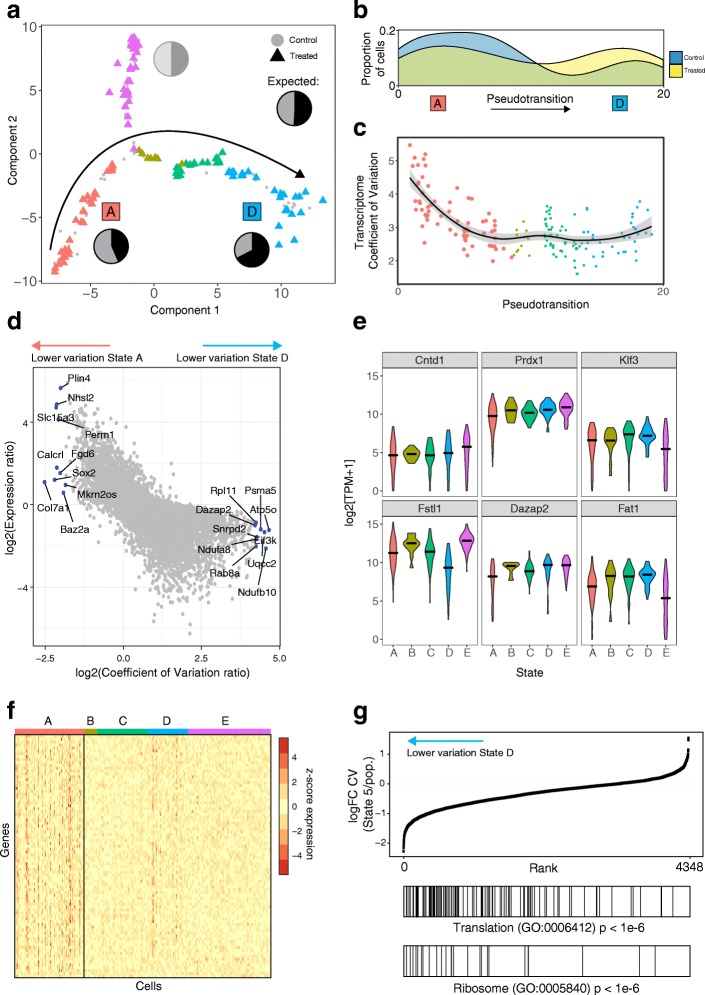Fig. 3.
Neighbouring Wnt activation reduces gene expression heterogeneity of protein-synthesis associated genes. a Keratinocytes exposed to Wnt signalling neighbours projected onto the WT epidermal cell state map. WT cells shown with grey circles, exposed cells shown coloured by cell cluster as triangles. Pie charts show relative proportions of WT vs signalling-exposed cells in each cell state cluster. States A and D are labelled as these states contain significantly different proportions of exposed vs unexposed cells. b Density of control vs NCA Wnt exposed cells along the reconstructed pseudotransition from states A to D. c Transcriptome coefficient of variation per-cell (TCOV), coloured by cell state and point size represents number of genes detected as expressed (TPM > 1) for that cell. Line depicts a loess-curve fit for the pseudotransition–TCOV relationship. d Scatterplot showing the log-ratio of coefficient of variation vs the log-ratio of gene expression between states A and D. Genes labelled depict the ten highest and lowest coefficient of variation ratios. Also see Additional file 1: Figure S2 for comparisons between states A and B and states B and D. e Violin plots depicting expression of cluster-specific genes showing differential dispersion between states. f Heatmap with symmetric gene expression scale (z-score normalised log2(TPM + 1)) showing reduction in gene expression heterogeneity of 281 genes between state A and the remaining transition states. g Gene rank enrichment analysis of log-fold change in gene coefficient of variation (CV) between cells in state D and the remainder of the cell population. Genes with lower variation in state 5 are enriched for translation and ribosome-associated gene ontology (GO) annotations (p value < 1e-6)

